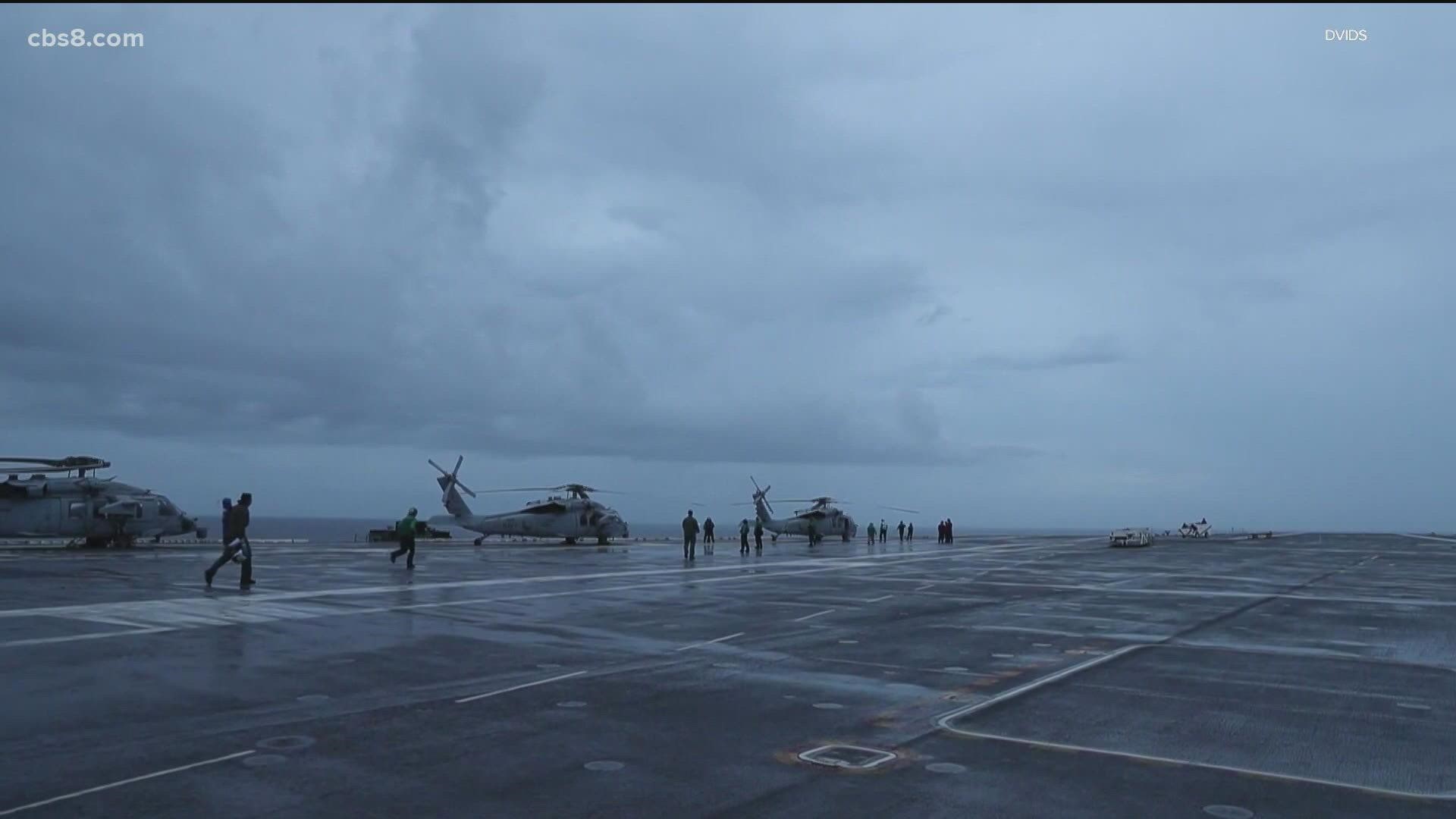SAN DIEGO COUNTY, Calif. — A military search-and-salvage team has recovered a U.S. Navy helicopter containing the remains of five crew members killed last summer when the aircraft crashed and sank in the ocean during routine flight operations off the coast of San Diego, Navy officials announced Tuesday.
The wreckage of the MH-60S Knighthawk was pulled from a depth of about 5,300 feet on Friday by a team from the Naval Sea Systems Command Supervisor of Salvage and Diving, operating aboard the multipurpose service vessel HOS Bayou, according to Navy officials.
The Bayou returned to Naval Air Station North Island on Saturday, after which the remains were transferred to Dover Air Force Base, Delaware, for identification.
The crash occurred about 4:30 p.m. on Aug. 31, after the helicopter began undergoing "side-to-side vibrations" while landing on the aircraft carrier USS Abraham Lincoln, according to a preliminary accident summary released by the Naval Safety Center.
As the aircraft lurched back and forth, its main rotor struck the deck of the ship, and the impact caused the helicopter to tumble into the sea, the agency reported.
One member of the six-person crew of the Knighthawk was pulled from the ocean. The rescued sailor and two others who were injured aboard the carrier were taken ashore for medical care and listed in stable condition. Another three personnel on the ship suffered minor injuries and remained aboard, officials said.
After more than 72 hours of searching in vain for the missing personnel by air and sea, the Navy declared them lost at sea and began efforts to recover their bodies from the ocean floor.
Killed in the crash were Lt. Bradley A. Foster, 29, a pilot from Oakhurst; Lt. Paul R. Fridley, 28, a pilot from Annandale, Virginia; Naval Air Crewman 2nd Class James P. Buriak, 31, from Salem, Virginia; hospital Corpsman 2nd Class Sarah F. Burns, 31, from Severna Park, Maryland; and hospital Corpsman 3rd Class Bailey J. Tucker, 21, from St. Louis.
Investigations continue into the accident, military officials said.
The recovery team found the wreckage of the aircraft using a towed, torpedo-shaped, side-scanning sonar that can search waters as deep as 8,000 feet, according to the U.S. Naval Institute.
Crews then recovered the sunken helicopter with deep-salvage equipment. Such apparatuses include remotely operated vehicles, such as CURV- 21, a 6,400-pound ROV that can descend to a depth of 20,000 feet, according to the institute.
WATCH RELATED: U.S. Navy identifies the 5 crewmembers that died in helicopter crash off California coast (September 2021)

